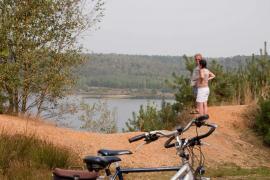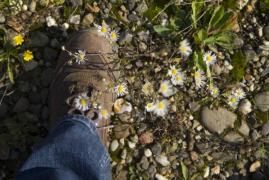Agency for Nature and Forests

The Flemish Government’s Agency for Nature and Forests is responsible for the management of the Hoge Kempen National Park.
The Agency's aim is to create an ecosystem that is as natural as possible and self-regulating, without, however, losing sight of the great cultural value of the Western European heathland landscape. For example, heather that is too old is cut down in places, an excessive proliferation of grasses is scraped away and trees are cut down here and there. By spreading these drastic measures in space and time, a large variety of biotopes are created for both man and nature.
The surrounding forests are preserved, but are, by targeted thinning and by combating some plague species, such as the black cherry and northern red oak, organised in a more nature-friendly way.
By creating open spaces and more varied forest edges, more light enters the very dark coniferous plantations that are very unattractive for both man and nature.
Moreover, a large part of the National Park belongs to the Natura 2000 network, the European network of very valuable nature areas. If you would like to know what the Agency for Nature and Forests does in terms of Natura 2000, then take a look at www.natura2000.vlaanderen.be.
For more info about the management you can contact:
Agency for Nature and Forests - Limburg
Koningin Astridlaan 50 bus 5, 3500 Hasselt
T: +32 11 74 24 50 - E:
www.natuurenbos.be
Together for more and better nature
Despite the vastness and diversity of the National Park, there are species and vegetation that need a boost. Together with all partners and users of the National Park, the Agency for Nature and Forests has drawn up a plan to further improve the park: the Hoge Kempen Nature Conservation Master Plan. To achieve this, a greater variety of forests will be created, the heathland will be enhanced, its quality will be improved and the various heathland areas will be reconnected.
The implementation of this plan leads to an increase in the species we wish to attract, such as the saddle-backed bush cricket, the red-backed shrike and the moor frog. But many other species are also doing better as a result. Even the yellow-spotted whiteface, once extinct in Flanders, has returned. In short, the aim is to create a more attractive landscape in order to ensure that nature’s various functions are combined to some extent. In this way, wood can continue to be produced, but biodiversity can also be increased and people can continue to enjoy a beautiful and diverse landscape.





